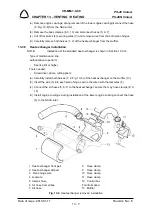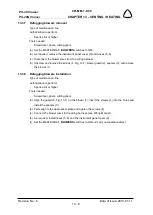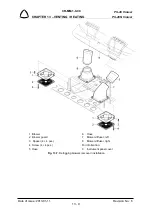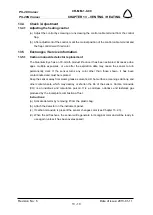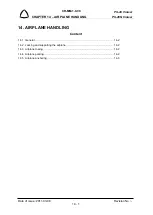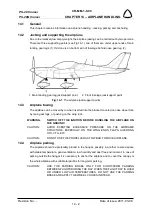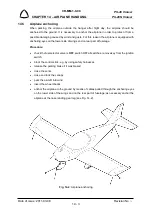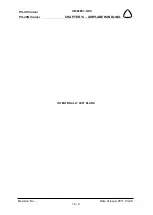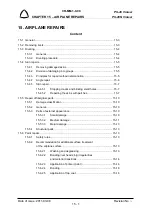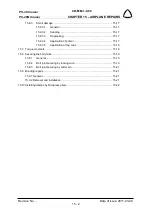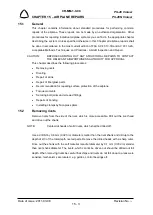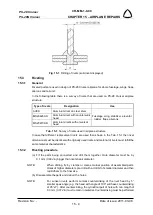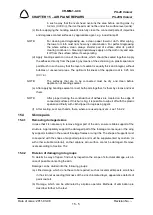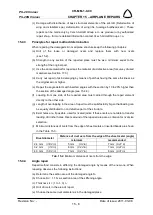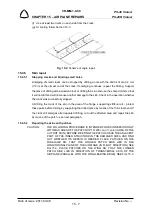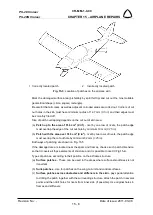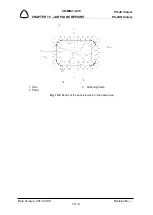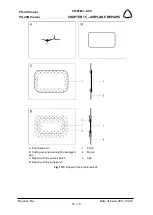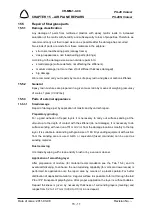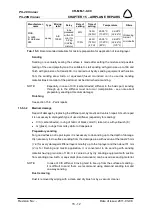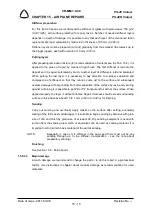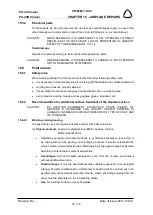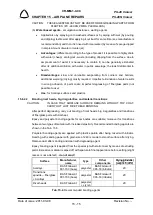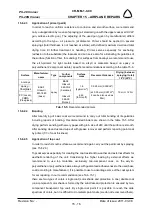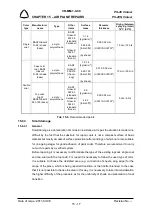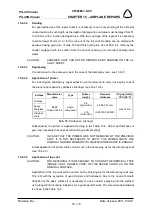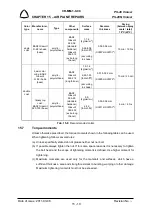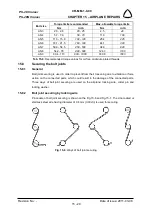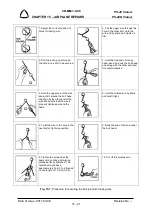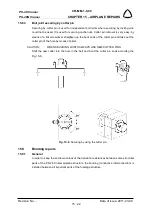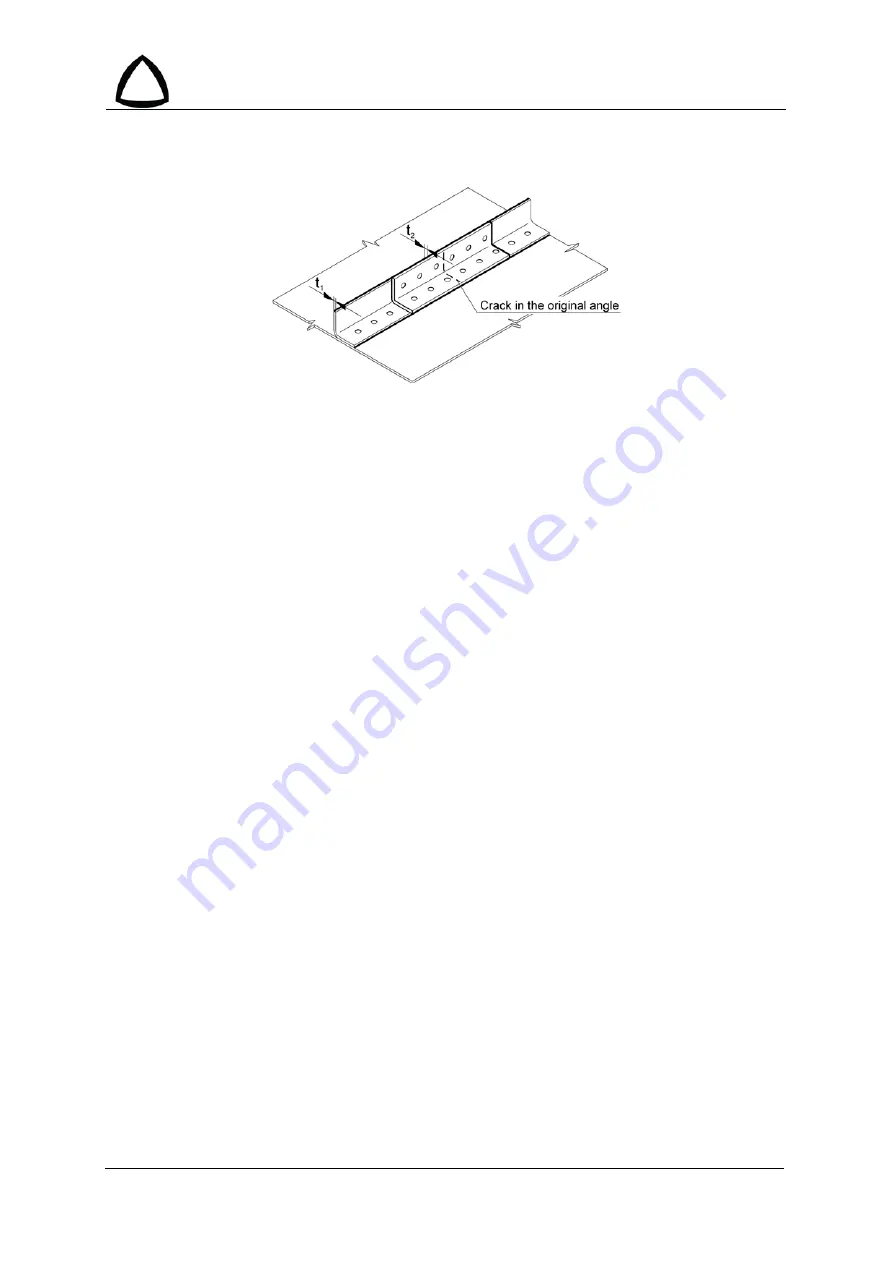
CR-MM-1-0-00
PS-28 Cruiser
PS-28N Cruiser
CHAPTER 15 – AIRPLANE REPAIRS
Date of issue: 2011-03-08
Revision No.: -
15 - 7
(f) Use at least two rivets on each side from the crack.
(g) At riveting follow Section 15.3.
Fig. 15-2
: Scheme of angle repair
15.4.5
Skin repair
15.4.5.1
Stopping cracks and blinding small holes
Enlarging of small cracks can be stopped by drilling a hole with the drill bit of dia 3.2 mm
(
1/8 in
) at the utmost end of the crack. If enlarging continues, repeat the drilling. Support
the place of drilling with a wooden block at drilling thin skin and use the sharp drill bit so that
it will not drift and will not cause another damage to the skin. Check in the operation whether
the crack was successfully stopped.
At drilling the crack of the skin in the area of the flange, supporting stiffener etc., protect
these parts before drilling by supporting the drilled place by means of the thin steel band. If
the crack still enlarges after repeated drilling, cut out the affected area and repair the skin
by means of the patch - see next paragraph.
15.4.5.2
Repairing the skins with patches
CAUTION:
THE FOLLOWING PROCEDURE IS INTENDED FOR SKIN REPAIRS ONLY
WITH MAX. AREA OF THE PATCH UP TO 200 cm
2
(
31 sq in
) (AREA OF THE
CUT OUT SKIN). BEFORE RIVETING THE PATCH CHECK THE ADJACENT
PART OF THE INNER STRUCTURE IN THE DAMAGED AREA AND FIND
OUT WHETHER ITS REPAIR IS NEEDED. PLACE PATCHES ON THE
FUSELAGE SO, THAT THE LONGER PATCH SIDE LIES IN THE
LONGITUDINAL PLANE OF THE AIRPLANE (IN FLIGHT DIRECTION), SEE
FIG.15-3. PLACE PATCHES ON THE WING SO, THAT THE LONGER
PATCH SIDE LIES IN DIRECTION OF TRANSVERSAL AXIS OF THE
AIRPLANE (PARALLEL WITH THE WING LEADING EDGE), SEE FIG. 15-3.

